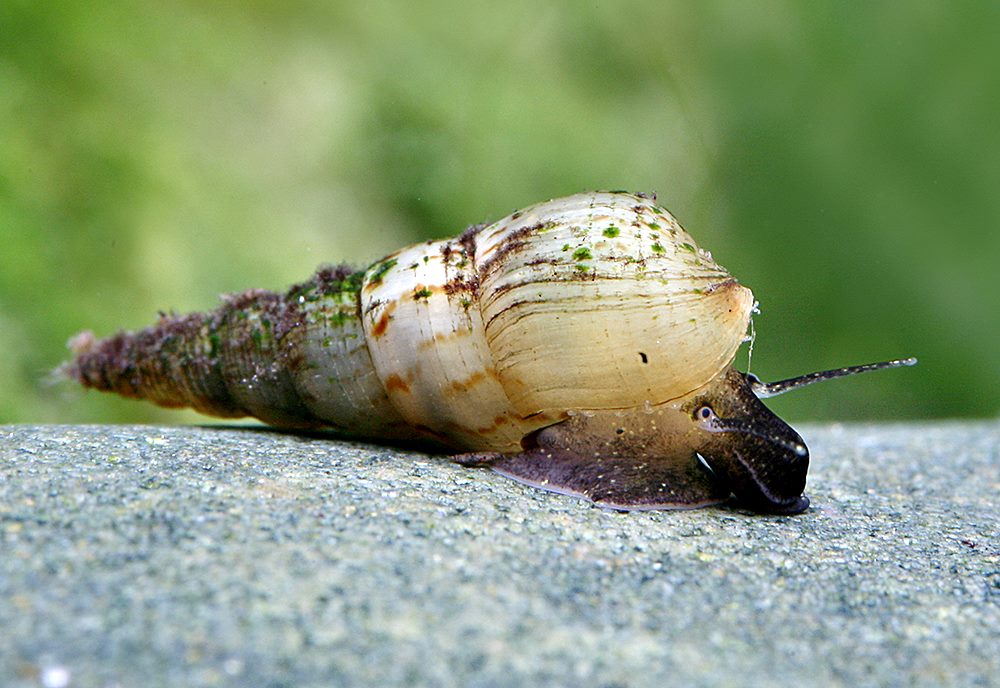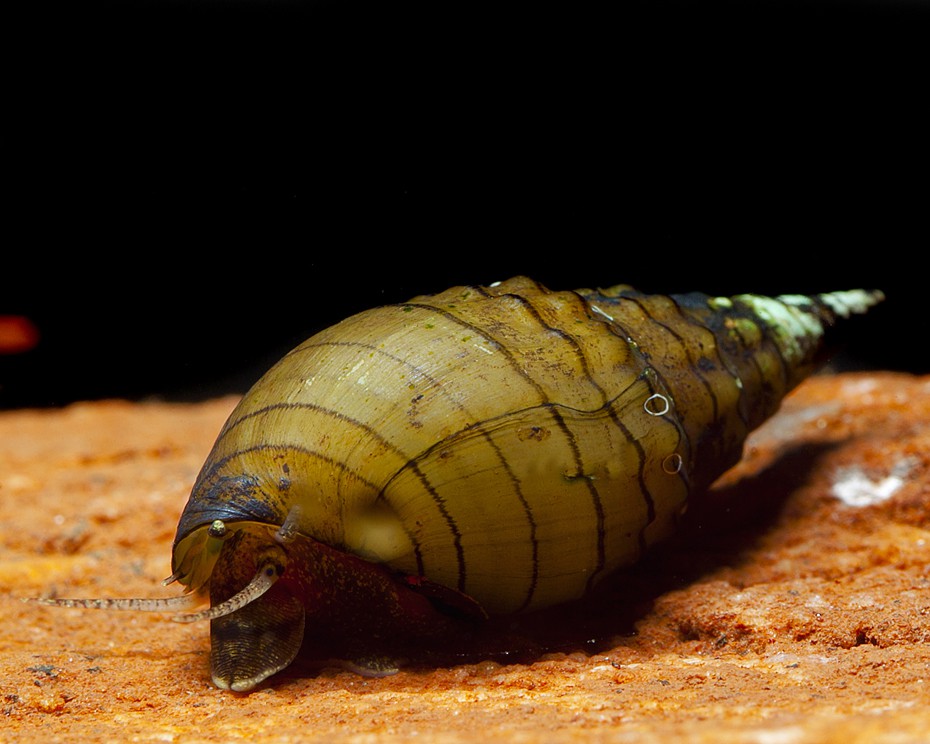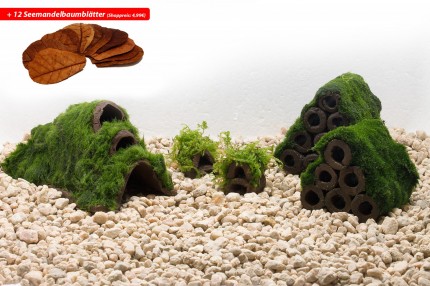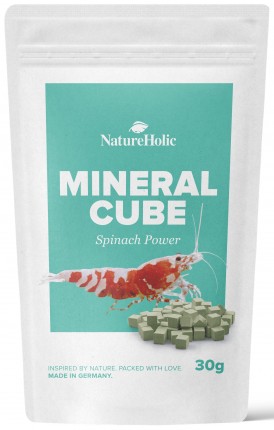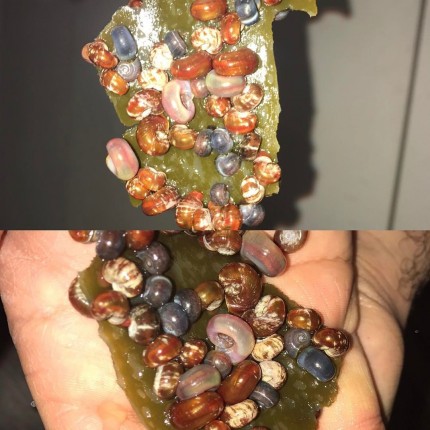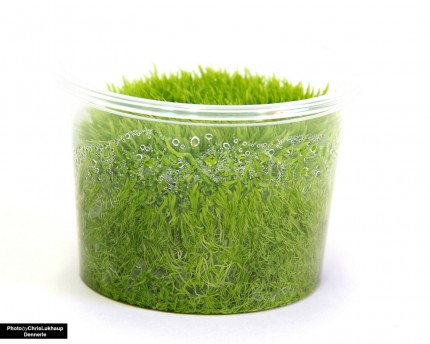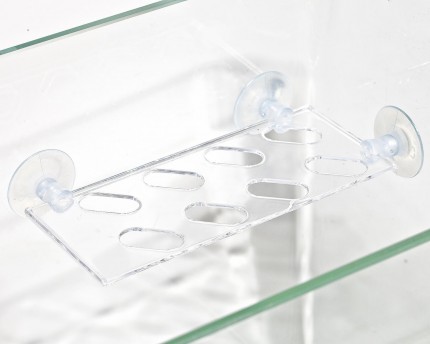Tower snails in the aquarium - blessing or curse?
In the past, they were often decried as nuisances, but the various gill-breathing turret snails (affectionately abbreviated as TDS) of the Thiaridae family are actually decidedly beneficial aquarium co-inhabitants. Their high reproduction rates have brought them into disrepute in the past, but their benefits far outweigh them!
A somewhat steep thesis at first glance states that every aquarium has exactly as many snails as it needs. What is behind this, and what is behind the - actually occurring now and then - mass reproduction in the case of the tower lid snails?
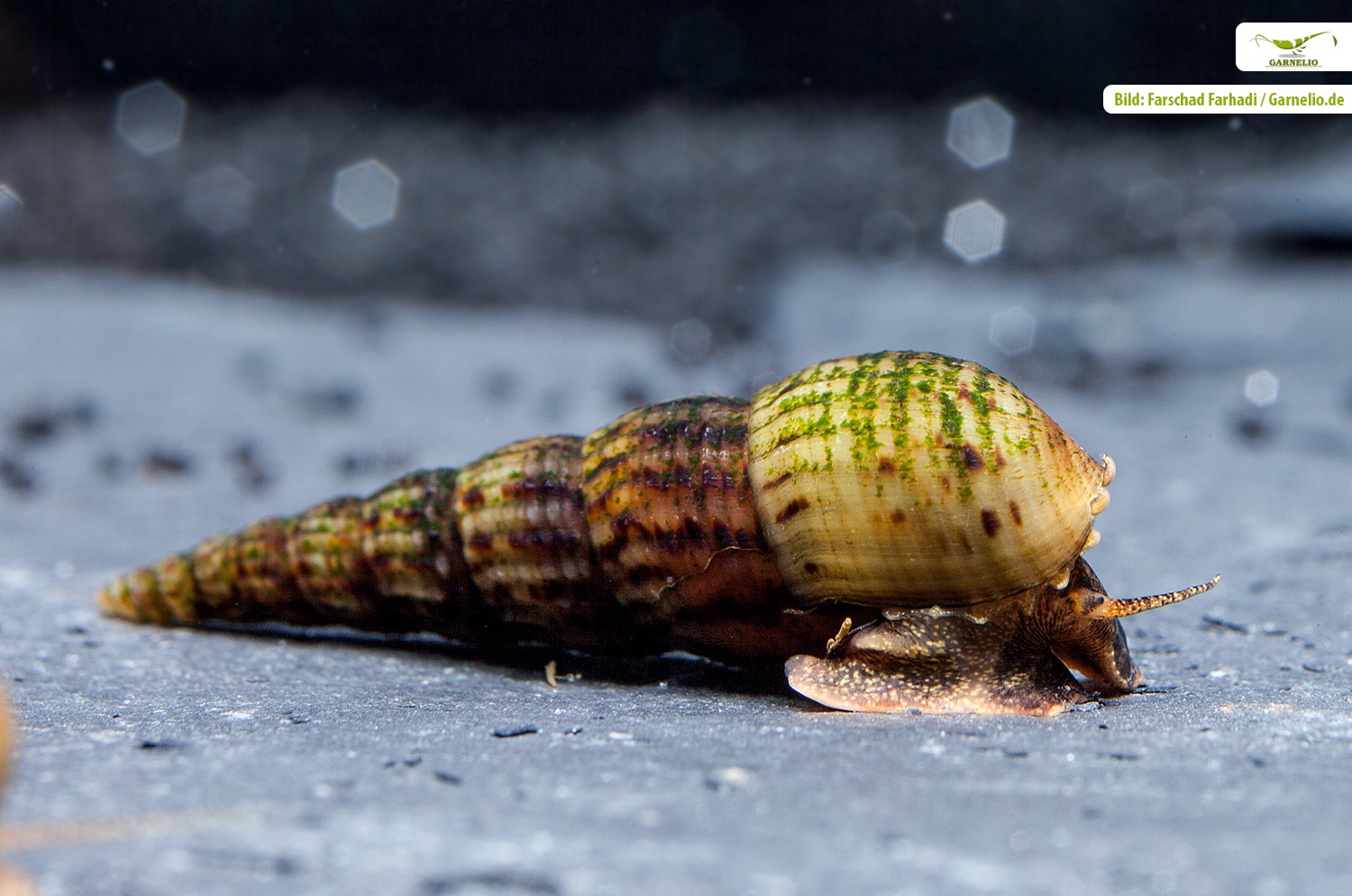
The classic trumpet snails
We would like to deal here especially with the "classical" trumpet snails like Melanoides tuberculata, the Malayan trumpet snail, also called needle-crowned snail, like Tarebia granifera, the Genoppte trumpet snail or Nöppi, like the Black trumpet snail Melanoides maculata, but also the Spiky trumpet snail Tarebia lineata. All of these species are viviparous, and furthermore, they are capable of juvenile production. What does this mean? Virgin reproduction means that the snail is capable of cloning itself. In the hobby, not a single male animal has yet been detected in the above-mentioned classic trumpet snails. All of these animals are female, and they all reproduce by cloning. Thus, of course, a single one of these snails is enough to gradually colonize the whole aquarium.
Reproduction of the classic TDS
If there is an abundant supply of food, the omnivorous Turmdeckelschnecken, just like many other aquarium snails, indeed reproduce very quickly and in large numbers. But this is something that everyone literally has in their own hands and that can be easily regulated. The number of snails can actually be influenced by sparing feeding and good aquarium hygiene. Since these trumpet snails definitely don't go for healthy plants and thus secretly acquire a lush food source, you can indeed control the feeding very well.
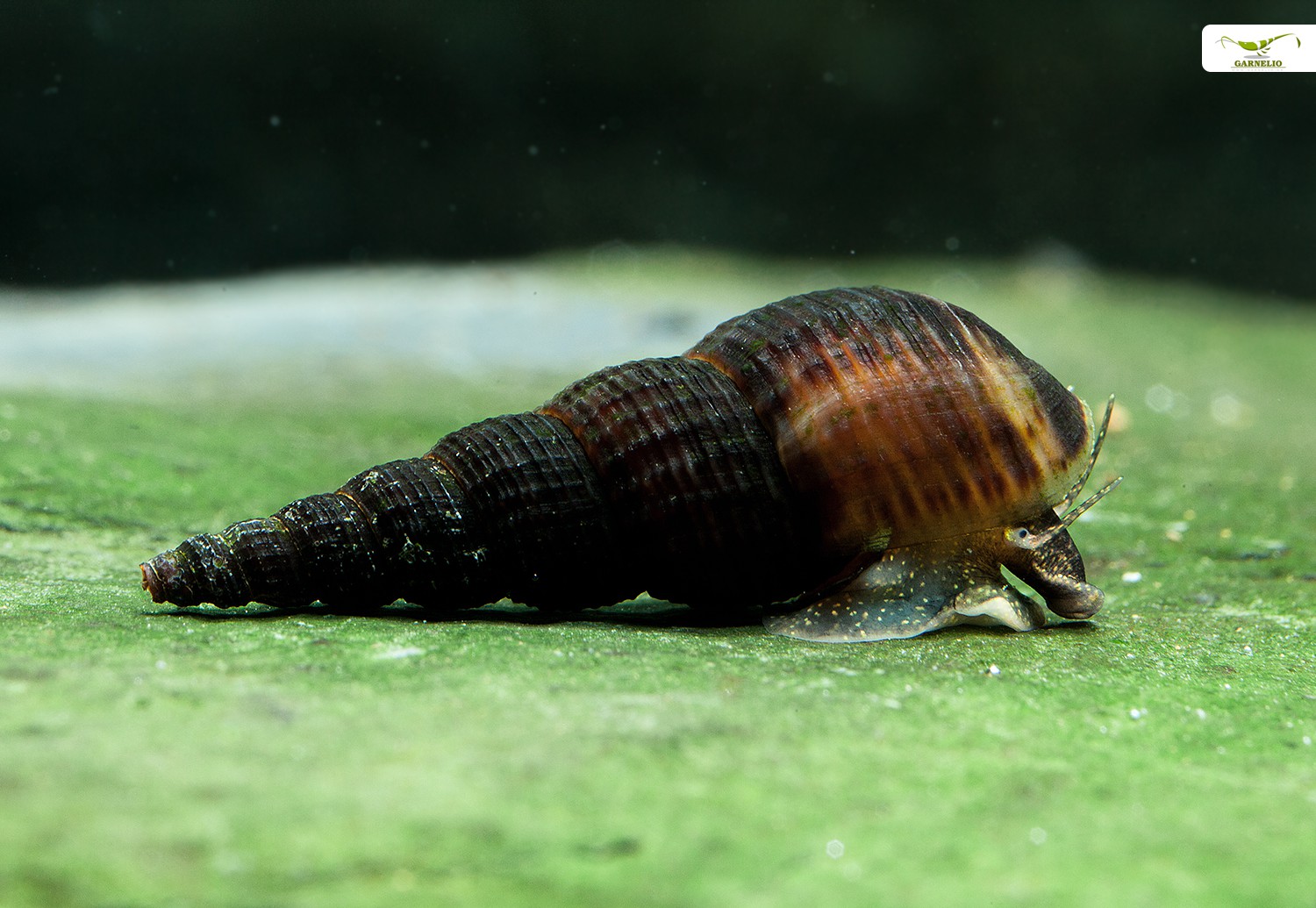
Diet and lifestyle
Like most aquatic snails, the classic tower snails do not only feed on plant material, they also eat food of animal origin. Since the small beneficial snails eat detritus lying on the bottom, i.e. plant remains, food remains, carrion and mulm, they also act as health police in the aquarium. The supply of protein is particularly important for the formation of a beautiful shell - the colored layer (the periostracum) on the calcareous shell, which protects it from corrosion by acids and from abrasion, consists of a very complex protein. It is often noticed that the top of the shell looks white in the case of the soil-dwelling rookery snails. This oldest part of the shell is particularly susceptible to corrosion. This is not a big deal, however, because the snail no longer "inhabits" the uppermost coils of its shell and thus will not suffer damage to its soft tissues. Incidentally, snails can repair holes in their shells from the inside by depositing lime there. However, the color will not come back in these places, the periostracum cannot be regenerated.
Water values
Concerning the water values Malayan Tower Ceiling Snails, Genopped Tower Ceiling Snails, Black Tower Ceiling Snails and Spiky Tower Ceiling Snails are quite insensitive. They prefer a pH of 6 to 8.5, a KH of 3 or more, a GH of up to 22 and water temperatures of 18 to 33 °C. The Malayan Tower Ceiling Snails can even be kept in brackish water aquariums with even higher water hardness. The higher the salinity, the smaller the animals remain. However, the mineral content of the water is important. Especially in soft water tanks (but not only there) the shells eventually start to turn white - then it is time for comprehensive mulm suction. After that, the shells usually grow back nicely. The culprit for this phenomenon is probably anaerobic processes in the soil, where the acid content in the substrate increases.
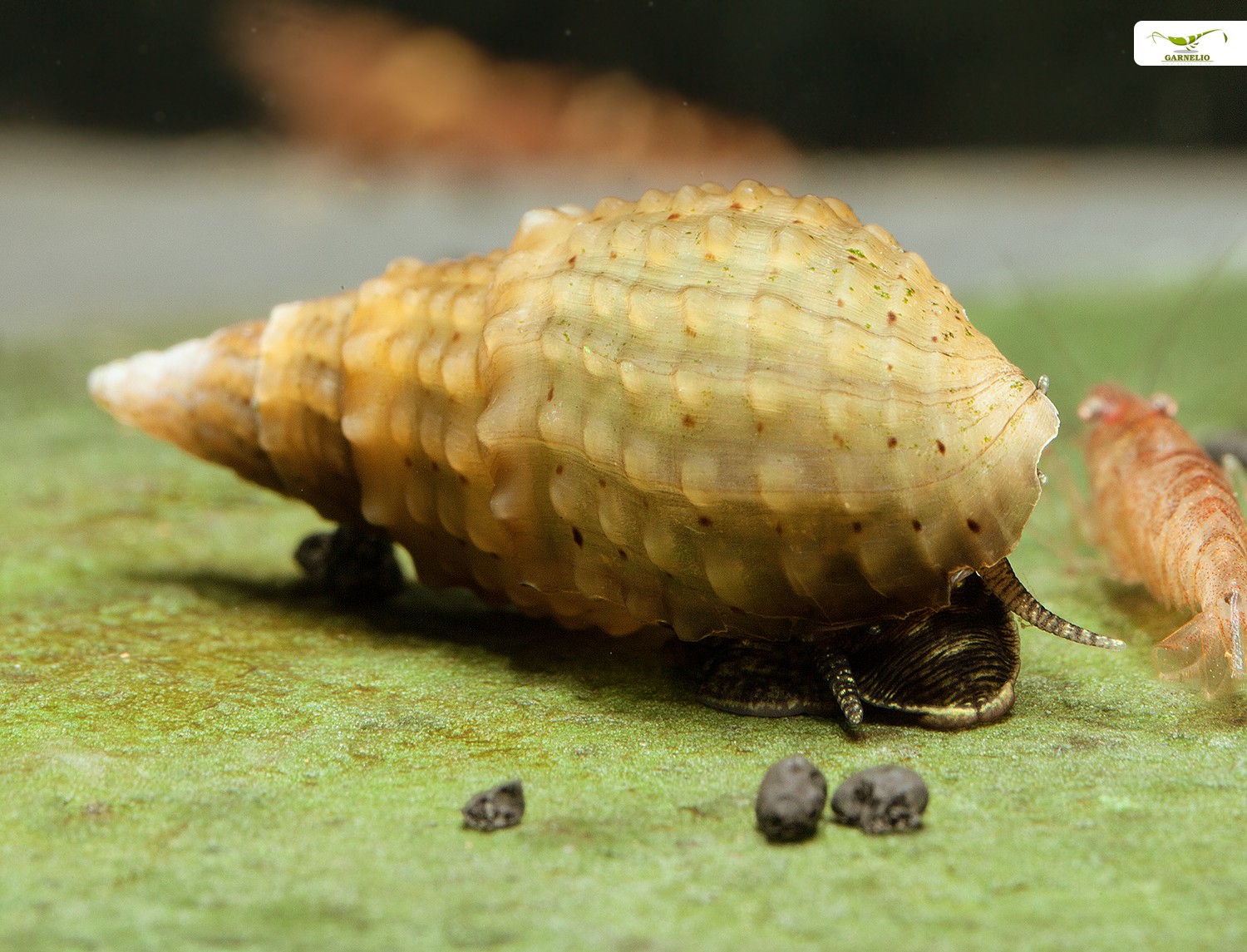
Usefulness - as a warning of problems
The more or less hidden in the substrate living cap snails become conspicuous when the oxygen content of the water decreases or the nitrite content increases - which can be the case in the evening after the light goes out (harmless) or in case of problems in the aquarium. Then one can observe a true migration of the TDS towards the water surface and thus into more oxygen-rich layers - a fact that may have already saved the life of many a fish, crayfish and shrimp, if the owner was alerted to a problem in the aquarium at a very early stage by the behavior of the TDS and could act accordingly.
Benefit - as "earthworms" of the aquarium
The fact that snails live in the substrate makes them quite useful to the aquarium ecosystem. They dig up the bottom and ensure that fresh, oxygenated water reaches the plant roots. Through their digging activity they prevent the formation of putrefaction and - very important - putrefactive gases, which can make life very difficult for the aquarium stock. Unfortunately, TDS only go down into the substrate to a maximum depth of 4-5 cm, so they do not work through deeper substrate layers. But in the layers they do work, they make a significant difference! In addition to working through, they also bring nutrients to plant roots quite directly through their excretions.
Socialization
The socialization of tower snails is not complicated. In addition to their very thick and stable shell, the animals have a lid - the operculum - that tightly seals the shell opening, protecting them from external influences. Their way of living in the soil also protects them from predators. Only predatory snails can prey on the classic louvered snails, and even most crayfish find the snail shells too hard.
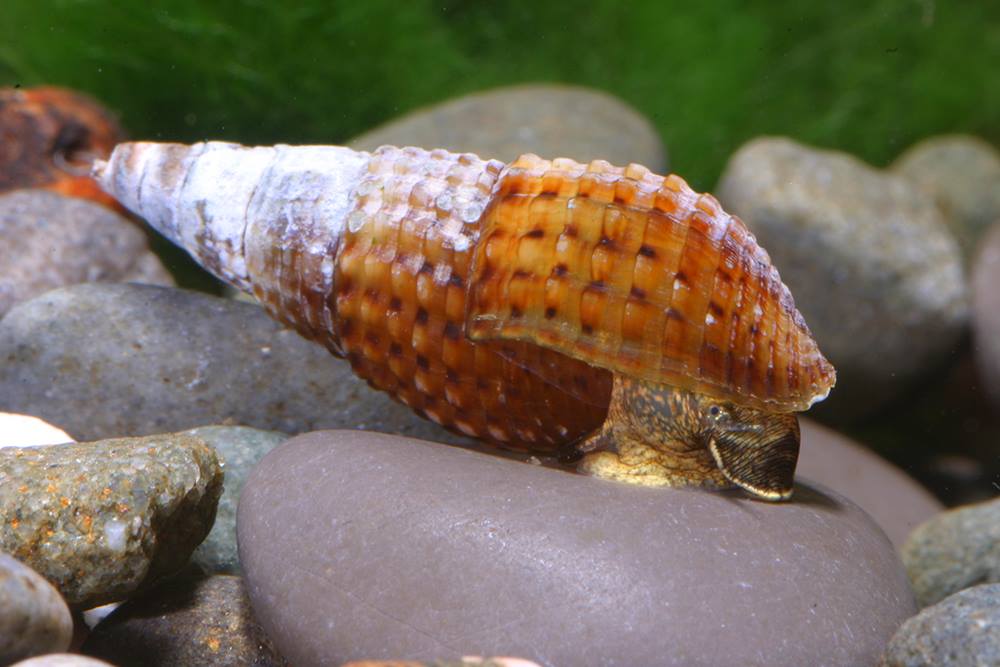
The species:
Indian trumpet snail - Melanoides tuberculata
They are found in large parts of the world, often they were introduced and have become established in nature due to their robustness. The animals prefer subtropical climates. Originally this species originates from East Africa to Southeast Asia. Malayan rookery snails are characterized by a finely sculpted shell, which has crown-like serrations at the shell opening. They are formed by the tissue of the mantle and presumably serve an improved absorption of various substances from the water due to the enlargement of the surface. The body of the needle-crowned snail is dark, and the animals have a characteristic "snout". As with all aquatic snails, the small eyes are located at the base of the antenna. The shells are long and relatively pointed. They can show all shades of brown from light beige to reddish brown to almost black. Light beige shells often have darker small spots. With a shell length of up to 3.5 cm, the Malayan TDS can become quite large, but especially the variants with darker shells often remain much smaller.
Black Mud Snail - Melanoides maculata

The name already says it: Melanoides maculata has a very dark colored shell with a great sculpturing, which makes it very special. A little bit the beautiful animals with the filigree, slender little house look like a small Tylomelania. The little house can grow 3-6 cm long. The black lacewing has a dark pigmented body with fine light spots. The animals originally come from the Philippines. They are not yet as widespread in the hobby as the Malayan Tower Ceiling Snail.
Spiky Tower Ceiling Snail - Tarebia lineata
The beautiful spiky trumpet snail from Southeast Asia has not been in the hobby for very long, but since it is persistent and hardy, it has quickly established itself. Their shell is light beige to olive in color and has a fine spiral continuous dark line from the opening to the tip, following the coils of the shell. The elongated nubs on the perimeters of the shell have given it its name (spiky). The body of this great snail is light to reddish-gray. With a shell height of up to 2.5 cm, it remains somewhat smaller than other spiny lace snails.
Nopped Mud Snail, Nöppi - Tarebia granifera
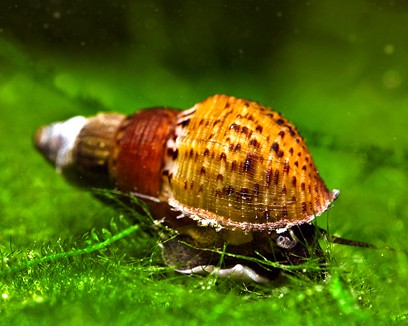
The nubby trumpet snail has a somewhat smaller and thicker shell than the other TDS, which grows to just under 2 cm long and has the characteristic nubs on each handle. In color it is light to dark reddish brown and often has a darker dot pattern. The body of the Nöppi is dark gray to black. Of all TDS, the Nöppi reproduces among the fastest and best under suitable conditions. The animals are found in nature in the Indo-Pacific, but have now spread almost everywhere in the subtropics thanks to their adaptability and robustness.

